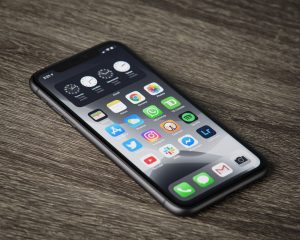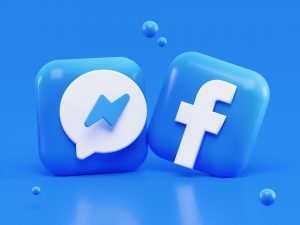ADHD Hyperfocus
ADHD can create many obstacles to productivity, but it does have a few tricks up its sleeve. One of those tricks is ADHD Hyperfocus. It stems from the same cognitive issues that cause distractibility, but on the other end of the concentration spectrum.
Hyperfocus is an attribute of ADHD that describes the tendency to focus on certain tasks for hours while dismissing all other tasks. It sounds counterintuitive to most descriptions of ADHD symptoms because, in essence, it is the opposite of distractibility.
ADHD Hyperfocus can be disastrous if not contained and can lead to an intense focus on one task, at the expense of all other tasks.
Although ADHD hyperfocus would seem to be in conflict with traditional symptoms of adults with ADHD, it stems from those same symptoms. ADHD distractibility and hyperfocus have a shared causal relationship with the inability to control focus.
While at most times, the inability to control focus leads to easy distraction, the same inability causes ADHD hyperfocus on the opposite side of the symptoms spectrum.
ADHD hyperfocus describes the intense and narrow focus that we can engage for certain tasks, which usually comes at the cost of all else that requires our attention during that time of ADHD hyperfocus.
The condition of hyperfocus is shown in research to be linked to adults with ADHD, such as an article from Kordon, Khal, and Wahl (2006).
Both the inability to focus on a task and the failure to shift focus away from a task are also linked to ADHD’s impaired or paused executive functioning. Rather than not being able to focus on a given task, hyperfocus causes the inability to disengage focus from a given task.
ADHD, in general, is caused by an abnormally low level of dopamine in the prefrontal cortex. The low levels of dopamine lead to a decreased ability to regulate the brain’s cognitive top-down executive functions.
According to a research paper from Ashinoff and Abu-Akel (2021), while engaged in ADHD hyperfocusing, “unrelated external stimuli do not appear to be consciously perceived.”
So, the impaired executive functioning ability caused by ADHD is magnified during an ADHD hyperfocus session. This leaves someone with ADHD highly susceptible to over-hyperfocusing. The over-hyperfocusing leads to a pronounced inability to shift attention away from the hyperfocus cue.
Hyperfocus can cause serious productivity issues by blocking our ability to multi-task. However, it can be a game-changer when used at the right time and on the right task. Hyperfocus can allow us to lock in and keep a razor-sharp focus on a single task.
Hyperfocus is one of the best assets of adult ADHD. If channeled and redirected towards productive goals, adult ADHD hyperfocus can supercharge our ability to reach those goals.
The key is to control ADHD Hyperfocus rather than allow it to control and sabotage our productivity. ADHD Hyperfocus needs to be harnessed and planned. We need to enter a hyperfocus session and exit the hyperfocus session when it is optimal for our productivity.
Harnessing ADHD Hyperfocus.
While it may be a detriment when we need to focus elsewhere, ADHD hyperfocus can be incredibly effective if aimed at the right tasks at the right time.
If we plan and set aside time allotted for hyperfocus, and really focus on how the task is interesting and engaging, we can engage ADHD hyperfocus to our advantage.
I don’t think ADHD hyperfocus treatment should include suppressing this highly beneficial skill.
ADHD hyperfocus treatment should emphasize the advantages and should provide safe ways to practice and succeed with hyperfocus.
If planned appropriately with the allotted time, while including interesting, mentally challenging, and mentally rewarding content, we can engage ADHD hyperfocus as a distinct advantage.
Hyperfocus can allow us, who do have ADHD, to achieve results that are far above our peers that don’t have ADHD. It’s all about using the best resources available to achieve the desired focus.
These resources allow us to control the duration and conclusion of a hyperfocus session.
The list of tools below will help create some control over ADHD hyperfocus.
1. Noise Cancelling headphones.
Noise Cancelling headphones can give us control over two main aspects of hyperfocus. The first is staying engaged in hyperfocus. This benefit is related to the most obvious attribute of noise-canceling headphones. It’s easier to ignore distractions when we can’t hear those distractions.
The second aspect of hyperfocus that we can control with noise-canceling headphones is auditory cues. These are intentional audio reminders that we can set in the device controlling the headphones. We can set these reminders based on when we need to exit the hyperfocus session.
I’ll use an iPhone to demonstrate some examples. Other apps can pause the music to provide reminders and notification sounds when a music app is being used. Since the headphones block out external noise, these auditory reminder sounds are isolated from any other noise.
This isolation magnifies the effectiveness of the auditory reminders in grabbing our attention and reminding us to disengage our hyperfocus. Also, if we use the same specific reminder sounds as cues, we can program our subconscious to always reactively exit our hyperfocus sessions.
-
I’ve been using a pair of AirPods Pro for about a year, and they are by far the best Noise Cancelling earbuds I have ever used. I’ve used them to block out noise for both air travel and studying. Their noise-canceling feature is top-notch and is comparable to the top Bose NC 700. However, their features are primarily useful only with Apple devices. That being said, their features on Apple devices are well integrated, seamless, and very high performing. Their transparency mode is flawless and truly sounds like you are not wearing any earbuds when the mode is activated. Currently, Amazon has the AirPods Pro priced well below the Apple Store at $189 versus the same product sold directly from Apple for $249.
-
The Q20 is Anker’s older model of over-ear headphones. However, the Q20 is very underpriced for its performance. It has excellent noise-canceling abilities that far exceed other headphones in its price range. Additionally, because it is the previous model, it is well priced at $59. Prior to purchasing the expensive Bose headphones, these noise-canceling Anker headphones were my primary pair.
-
JLAB has always made quality audio products, from their Bluetooth running earbuds to their over-ear noise-canceling headphones. Their headphones tend to be slightly base-heavy, with even mid-tones and a clear upper range.
-
It goes without saying that Bose is the king of noise-cancellation since they pioneered noise-canceling technology. The Bose over-ear noise-canceling 700 series headphones keep the tradition alive with superior noise-cancelation. They feature the ability to adjust the level of noise-cancellation from transparent to ultra noise-cancelation. They also feature touch controls that allow for full control with a touch to the ear cup.
2. Automated Auditory and Visual reminders.
Another helpful trick is using automated auditory and visual reminders such as the reminder features built into online calendars and task lists. These reminders, or cues, can help us avoid the unintended neglect of other tasks. Also, using timers can help us leave an ADHD hyperfocus session when the planned time is over.
For more ideas on online reminders and timers, see my other article about Online Tools. The Apple Watch can be a very accessible and customizable tool for creating effective and consciously perceptible cues. Here’s a link to another article here at the ADHD Lifestyle about the benefits of an Apple Watch with ADHD.
3. Use dedicated reminders apps.
For auditory reminder cues to be effective, we need to silence the less important smartphone reminders. This means silencing notifications from other apps such as social media. The intended auditory reminder cues are less effective when lost in a sea of other random notifications.
Sure, the built-in iPhone timer app is sufficient for the job. However, some dedicated reminder apps provide a bit more flexibility and customization. The list below provides a few timer and reminder apps that are especially useful for creating timed reminders.
- Focus Keeper Pro – Customizable timers, focus session tracking and break tracking.
- Pomodoro – Focus Timer – Pomodoro timer, tracker, and includes nature sounds.
- Flipd: Focus & Study Timer – Focus timers, focus session tracking, focus music, and background sounds.
- Time Timer – Customizable focus timers and customizable alerts. Keep multiple planned timers saved in-app.
- Flow – Focus & Pomodoro Timer – Customizable focus timers, focus session tracking and includes break and interruption tracking.
4. Quality Focus Music.
Focus Music can be a game-changer with ADHD Hyperfocus. The key to choosing the optimal music is to consider whether the music itself may distract you.
As I’ve mentioned earlier in this blog, clearly, the 90’s produced the greatest music. I mean, where would the world be without grunge rock? Well, as I get older, my view of music tends to hover over the same era. However, this kind of music will instantly grab my attention, which is not what I need to stay engaged in a productive Hyperfocus session.
Here is a link to my article about music for concentration within this blog, The ADHD Lifestyle. The article discusses several music streaming services that work well for achieving and sustaining a productive ADHD Hyperfocus session.
The goal is to listen to music that stays in the background of your mind, but yet is also upbeat and energizing. Two music streaming services that are particularly good at this are Brain.FM and Focus@Will. I have an in-depth review of Brain.FM here.
5. Time Management.
For adults with ADHD, planning and allotting time for ADHD hyperfocusing can be a challenge. If not planned appropriately, there’s a risk of missing anything else during that time that needed our attention, such as appointments, phone calls, and other scheduled tasks.
For many adults with ADHD, hyperfocus can lead to completely losing track of time. So, we need to plan accordingly.
6. Engaging Content.
We also need to make the task engaging and mentally rewarding, to help cue hyperfocus. The best scenario would be working in a job that you naturally love, and have a pre-existing interest in the content of your job.
According to Herzberg’s “motivation-hygiene theory”, also called the “two-factor theory of job attitudes”, jobs with high content Motivators will elicit more mental satisfaction (Herzberg 1974). The opposite describes job hygiene factors such as tasks that are boring, which do not generally include high mental challenge or satisfaction (Sachau 2007).
It’s the high content motivators that elicit ADHD hyperfocusing
-Helpful Closing Reminder:
In closing, keep in mind that ADHD hyperfocus is not always possible with every task. There are many tasks that we are required to do that are not interesting. For tedious tasks, techniques such as limiting the length of focus sessions can be more effective.
References:
1.Kordon, K.G., Kahl, K. G., & Wahl, K. (2006). A new understanding of attention-deficit disorders—beyond the age-at-onset criterion of DSM-IV. European Archives of Psychiatry and Clinical Neuroscience, 256(1), i47–i54.
2.Herzberg, Frederick. “Motivation-Hygiene Profiles: Pinpointing What Ails the Organization.” Organizational dynamics 3.2 (1974): 18–29. Web.
3.Sachau, Daniel A. “Resurrecting the Motivation-Hygiene Theory: Herzberg and the Positive Psychology Movement.” Human resource development review 6.4 (2007): 377–393. Web.
4.Ashinoff, B. K., & Abu-Akel, A. (2021). Hyperfocus: the forgotten frontier of attention. Psychological research, 85(1), 1–19. https://doi.org/10.1007/s00426-019-01245-8. Web.
This post may contain affiliate links that earn us a commission when you buy through our product links. For our full disclosure, please visit our Privacy Policy page.







